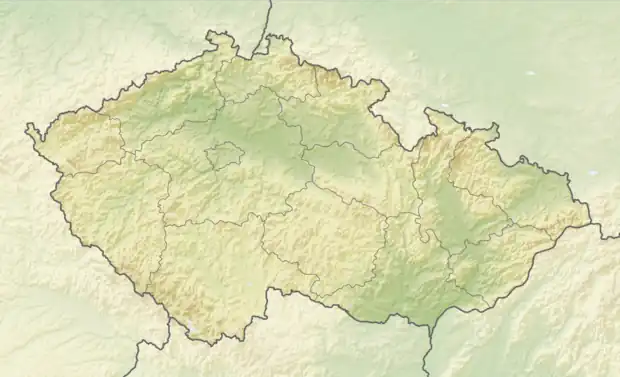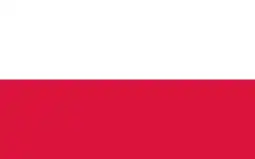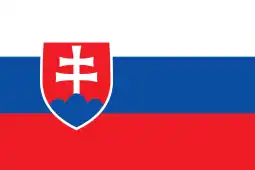Hradec nad Moravicí | |
|---|---|
.jpg.webp) Town square | |
 Flag  Coat of arms | |
 Hradec nad Moravicí Location in the Czech Republic | |
| Coordinates: 49°52′16″N 17°52′33″E / 49.87111°N 17.87583°E | |
| Country | |
| Region | Moravian-Silesian |
| District | Opava |
| First mentioned | 1066 |
| Government | |
| • Mayor | Patrik Orlík |
| Area | |
| • Total | 43.96 km2 (16.97 sq mi) |
| Elevation | 264 m (866 ft) |
| Population (2023-01-01)[1] | |
| • Total | 5,490 |
| • Density | 120/km2 (320/sq mi) |
| Time zone | UTC+1 (CET) |
| • Summer (DST) | UTC+2 (CEST) |
| Postal codes | 747 41, 747 84 |
| Website | www |
Hradec nad Moravicí (Czech pronunciation: [ˈɦradɛts ˈnad moravɪtsiː]; German: Grätz) is a town in Opava District in the Moravian-Silesian Region of the Czech Republic. It has about 5,500 inhabitants. The historic town centre with the castle complex is well preserved and is protected by law as an urban monument zone.
Administrative parts
Villages of Benkovice, Bohučovice, Domoradovice, Filipovice, Jakubčovice, Kajlovec and Žimrovice are administrative parts of Hradec nad Moravicí.
Geography
Hradec nad Moravicí is located about 7 kilometres (4 mi) south of Opava and 23 kilometres (14 mi) west of Ostrava. It lies in the Nízký Jeseník range. The highest point is the hill Šance at 522 m (1,713 ft) above sea level. The Moravice River flows through the town.
History

The area around Hradec nad Moravicí was first settled approximately in 3000 BC. A gord was built in the 8th century. The first written mention of Hradec and the local fortress is from 1060, when Bolesław II the Generous' army was defeated here.[2]
After the fortress was damaged by fire in the mid-13th century, King Ottokar II of Bohemia had rebuilt it into an extensive Gothic castle. The castle gained importance in the years 1279–1281, when the widowed Queen Kunigunde lived here, and subsequently when it became the seat castle of the Duchy of Troppau. In 1481, the settlement was promoted to a town. In the Middle Ages, the town with the castle was never conquered.[2][3]
Hradec was owned by the Czech kings until 1585, when Rudolf II sold it to Kašpar Pruskovský of Pruskov. The town suffered during the Thirty Years' War and lost its town rights until 1702. In 1778, the Hradec estate was purchased by the princely house of Lichnowsky, who owned it until 1945.[2]
The town experienced significant industrial growth in 19th century and a railway was connected to the town in 1905. In 1938, the town was annexed by Nazi Germany. It was returned to Czechoslovakia in 1945, and the town's German population was expelled. Between 1968 and 1972, several municipalities were annexed to Hradec. In 1972, the town was renamed Hradec nad Moravicí.[2]
Demographics
|
|
| ||||||||||||||||||||||||||||||||||||||||||||||||||||||
| Source: Censuses[4][5] | ||||||||||||||||||||||||||||||||||||||||||||||||||||||||
Transport
The I/57 road from Opava to Nový Jičín passes through the town.
Hradec nad Moravicí is connected with Opava by a short railway line of local importance.[6]
Culture

Beethoven's Hradec is an annual cultural event held in Hradec na Moravicí, described as international music competition and music festival. It commemorates two stays of Ludwig van Beethoven at the castle and has been held regularly since 1960.[7]
Sights

Hradec nad Moravicí is known for the Hradec nad Moravicí Castle. It is a complex formed by the older building, known as White Castle, newer building known as Red Castle, and a large castle park. The original Gothic castle was rebuilt into a Renaissance residence by the Pruskovský of Pruskov family after 1585. The castle was damaged by fire in 1796. It was reconstructed in the Empire style in 1796–1804, and the English-style park was founded. The White Castle has retained its Empire appearance to this day. In the second half of the 19th century, the complex was extended by the neo-Gothic Red Castle with stables, coach rooms and mural wall. The last structure built in the castle complex was the pseudo-Gothic White Tower.[2][3]
Today the castle is owned by the state and is open to the public. It contains several expositions with valuable collections, and a gallery.[3] The castle park with an area of 130 ha (320 acres) is the third largest castle park in the Czech Republic. It includes a valuable collection of exotic trees and shrubs.[2]
The Church of Saints Peter and Paul was built between 1585 and 1594. It has the oldest bells in the region.[8] Silesian Calvary is a pilgrimage site formed by Stations of the Cross from 1764, leading from the town to Kalvárie Hill.[2]
Šance are the remains of 18th century military fortifications that were built during the Silesian Wars near Jakubčovice. It is the highest point of the town and an observation tower was built here in 2005.[9]
Notable people
- Felix Lichnowsky (1814–1848), nobleman and politician; lived here
Twin towns – sister cities
Hradec nad Moravicí is twinned with:[10]
 Baborów, Poland
Baborów, Poland Liptovský Hrádok, Slovakia
Liptovský Hrádok, Slovakia
References
- ↑ "Population of Municipalities – 1 January 2023". Czech Statistical Office. 2023-05-23.
- 1 2 3 4 5 6 7 "Program rozvoje města Hradec nad Moravicí na období let 2021–2024" (PDF) (in Czech). Město Hradec nad Moravicí. 2020-12-14. pp. 3–4, 30–31. Retrieved 2022-03-22.
- 1 2 3 "History". Hradec nad Moravicí Castle. Retrieved 2022-03-22.
- ↑ "Historický lexikon obcí České republiky 1869–2011 – Okres Opava" (in Czech). Czech Statistical Office. 2015-12-21. pp. 3–4.
- ↑ "Population Census 2021: Population by sex". Public Database. Czech Statistical Office. 2021-03-27.
- ↑ "Detail stanice Hradec n.Moravicí" (in Czech). České dráhy. Retrieved 2023-08-21.
- ↑ "History". Beethoven's Hradec. Retrieved 2022-03-22.
- ↑ "St. Peter and Paul's Church". Tourist Information Centre Hradec nad Moravicí. Retrieved 2022-03-22.
- ↑ "Šance Lookout Tower". Tourist Information Centre Hradec nad Moravicí. Retrieved 2022-03-22.
- ↑ "Rychlé odkazy: Partnerská města" (in Czech). Město Hradec nad Moravicí. Retrieved 2022-03-22.